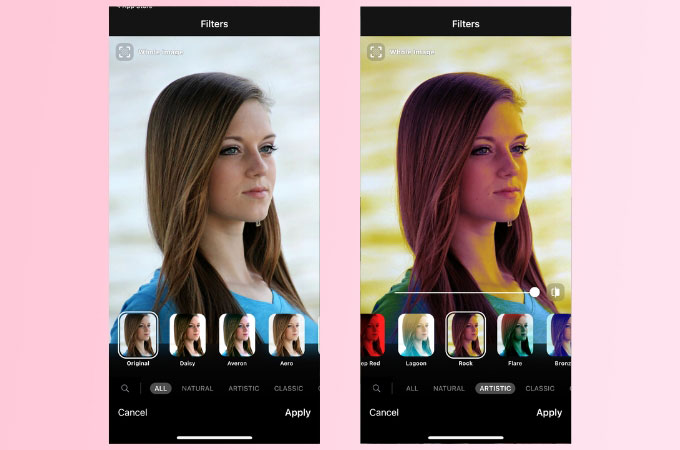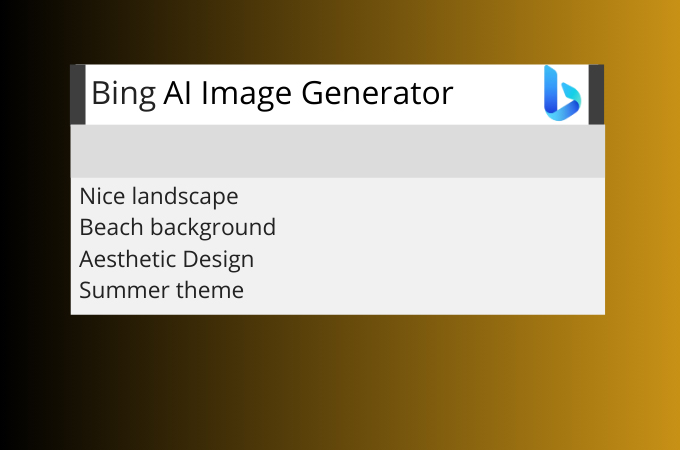Teenager Filter Apps for Mobile Phones
What are teenage filter apps? These are applications that leverage advanced AI technology to apply filters that make users look younger, fitting into the broader category of face filter apps. They are designed to quickly de-age oneself, offer multiple choices of generated pictures, and facilitate easy sharing of the transformed images on social media platforms like Instagram and TikTok.
Popularity of face filters among teenagers
Some Features of Face Filter Apps
What are face filter apps?
Face teenager filter app tools are mobile applications that leverage augmented reality technology to offer users a diverse array of filters and effects, enabling them to transform their selfies or photos of faces in real-time. These apps provide a wide range of options, including altering facial features, applying makeup, adding virtual accessories, and changing backgrounds, enhancing users’ creativity and self-expression. With social sharing features integrated into these apps, users can easily share their filtered photos or videos on various social media platforms, fostering social interaction and engagement. Additionally, some face filter apps offer creative tools for users to design their own filters or customize existing ones, further encouraging personalization and artistic expression within the app’s community. Among the top face teenager filter apps, YouCam Makeup stands out for its advanced facial recognition technology and constant updates, ensuring users can achieve the most natural and seamless teenage filter effects.
Popularity of face filters among teenagers
Face filters have surged in popularity among teenagers, becoming an integral part of their digital self-expression and social interactions. These filters offer teenagers a fun and creative way to enhance their selfies and photos, allowing them to experiment with different looks, alter facial features, and express their individuality. The ‘teenage look’ filter, in particular, has sparked a wave of nostalgia, enabling users to revisit their youth by adopting an aesthetic reminiscent of their teenage years. Platforms like Snapchat, Instagram, and TikTok, which heavily feature face filters, have become key social hubs for teenagers, who eagerly use these tools to create engaging content and connect with their peers.
Some Features of Face Filter Apps
Filters and Effects
Face filter apps offer a wide range of filters and effects, including changing facial features, adding makeup, applying virtual masks or accessories, and altering backgrounds. Among these, the Teenage Look filter on TikTok allows users to see a de-aged version of themselves, smoothing out the face and filling out the cheeks, which can elicit a wistful response from some users, especially those who had difficult teenage years. Similarly, the young filter, popularized by apps like Fotor, enables users to de-age themselves in seconds, offering advanced settings to adjust the similarity between the original and generated images and the ability to instantly share these pictures on social media.
Augmented Reality (AR) Technology
Many face filter apps utilize AR technology to track facial movements and apply filters in real-time, creating interactive and dynamic effects.
Social Sharing
Users can easily share their filtered photos or videos on social media platforms like Instagram, Snapchat, Facebook, and TikTok, enhancing their social media presence and engagement.
Creative Tools
Some face filter apps provide creative tools for users to design their own filters or customize existing ones, fostering creativity and personalization.
Community and Collaboration
Many face filter apps have built-in communities where users can discover and share filters created by other users, fostering a sense of community and collaboration among users.
Top Best Teenage Filter Apps
Snapchat

Known for pioneering face filters, Snapchat offers a wide range of fun and interactive filters that users can apply to their selfies and videos. From classic filters like dog ears and flower crowns to more sophisticated AR effects, Snapchat provides endless options for creative expression.
Key Features:
- Diverse range of face filters and AR effects.
- Real-time application of filters to photos and videos.
- Integration with Snapchat’s messaging and Stories features.
- Community-created filters and lenses.
Pros:
- Extensive library of fun and interactive filters.
- Seamless integration with Snapchat’s social platform.
- Constantly updated with new filters and features.
Cons:
- Filters may not always accurately track facial movements.
- Limited editing options compared to dedicated photo editing apps.

With its Stories feature and AR filters, Instagram has become another go-to platform for free teenage filter app. Users can access a diverse selection of filters created by both Instagram and third-party creators, ranging from subtle enhancements to whimsical transformations.
Key Features:
- AR face filters for Instagram Stories.
- Wide variety of filters created by Instagram and third-party developers.
- Interactive and animated filters.
- Integration with Instagram’s social network.
Pros:
- Large community of filter creators, leading to diverse options.
- Easy sharing of filtered content within the Instagram ecosystem.
- Ability to save and reuse favorite filters.
Cons:
- Limited customization options compared to standalone filter apps.
- Some filters may not work as smoothly on all devices.
TikTok

As a leading platform for short-form video content, TikTok has integrated face filters into its video creation tools. Users can apply filters in real-time while recording their videos, adding an extra layer of fun and creativity to their content.
Key Features:
- Real-time application of filters during video recording.
- Library of AR effects and face filters.
- Trending challenges and filters.
- Integration with TikTok’s social platform.
Pros:
- Seamless integration with TikTok’s video creation tools.
- Trending filters and challenges keep content fresh and engaging.
- Wide user base for sharing and discovering content.
Cons:
- Limited to video content creation, with fewer options for static images.
- Some filters may be exclusive to certain regions or markets.
FaceApp

FaceApp gained widespread attention for its aging and gender-swapping filters, but it also offers a variety of other fun and realistic teenage filter effect app that users can apply to their photos. From changing hairstyles to adding makeup effects, FaceApp provides a range of editing options.
Key Features:
- Aging, gender-swapping, and other transformation filters.
- Variety of editing tools for facial enhancements.
- Realistic and customizable filter effects.
- Integration with social media platforms for sharing.
Pros:
- Unique and entertaining transformation filters.
- Advanced editing options for refining facial features.
- Ability to save and share edited photos directly from the app.
Cons:
- Concerns over privacy and data usage.
- Some transformation filters may produce unrealistic results.
B612

Developed by LINE Corporation, B612 is a popular selfie camera app that offers a wide selection of filters and beauty effects. Users can choose from various filters categorized by themes like natural, film, and analog, as well as create their own customized filters.
Key Features:
- Wide selection of beauty filters and effects.
- Beauty editing tools for enhancing selfies.
- Customizable filters and stickers.
- Integration with social media platforms.
Pros:
- Focus on beauty filters and editing tools.
- User-friendly interface with intuitive controls.
- Ability to create and save customized filters.
Cons:
- Limited selection of AR face filters compared to other apps.
- Some editing features may require in-app purchases.
Snow

Originating from South Korea, Snow is another app that offers an excessive amount of face filters and AR effects. Users can access a diverse library of filters, stickers, and animations to enhance their selfies and videos, as well as engage with friends through the app’s social features.
Key Features:
- Large library of AR face filters, stickers, and animations.
- Real-time application of filters during video recording.
- Social features for sharing and interacting with friends.
- Customizable and interactive effects.
Pros:
- Vast collection of filters and stickers catering to various tastes.
- Fun and interactive effects for enhancing selfies and videos.
- Integration with social features for sharing and discovering content.
- Filters that can make users appear younger, boosting confidence by allowing them to see themselves with a younger look.
Cons:
- Interface may feel cluttered due to the abundance of features.
- Some filters and effects may not work consistently across all devices.
- The pursuit of a younger look through filters may impact teenagers’ self-esteem by setting unrealistic beauty standards.
Impact on Teenagers
A. Positive aspects of using face filter apps:
Facilitation of self-expression
Face filter apps provide teenagers with a platform for creative self-expression, allowing them to experiment with different looks, styles, and personas in a fun and lighthearted manner.
Boosting confidence
For some teenagers, using face filters can be a confidence booster, as it allows them to present themselves in a way that aligns with their ideal self-image, leading to increased self-esteem and positive feelings about their appearance.
Social connection
Face filters often serve as conversation starters and icebreakers among teenagers, fostering social interactions and connections both online and offline. Shared experiences of trying out new filters or participating in filter challenges can strengthen bonds between friends and peers.
B. Concerns about body image and self-esteem:
Unrealistic beauty standards
Some critics argue that face filters contribute to the perpetuation of unrealistic beauty standards, as many filters digitally enhance or alter facial features to conform to societal ideals of beauty. This can lead to feelings of inadequacy or dissatisfaction with one’s natural appearance.
Distorted self-perception
Excessive use of face filters may distort teenagers’ perceptions of themselves, making it challenging to distinguish between their real appearance and the filtered version. This blurred line between reality and virtuality can negatively impact self-perception and body image.
Comparison culture
The prevalence of filtered images on social media platforms can fuel a culture of comparison among teenagers, where individuals measure their worth and attractiveness based on unrealistic standards set by filtered images. This can lead to feelings of insecurity, envy, and low self-esteem.
C. Educational and creative potential:
Artistic expression
Face filter apps offer a creative outlet for teenagers to explore their artistic talents and experiment with digital design and animation. Many users enjoy designing their own custom filters or participating in creative challenges hosted by filter communities.
Educational opportunities
Some face filter apps incorporate educational elements into their filters, such as historical or cultural themes, allowing teenagers to learn while having fun. These educational filters can spark curiosity and interest in various subjects, making learning more engaging and accessible.
Career exploration
The popularity of face filter apps has led to the emergence of a new industry centered around AR design and development. Teenagers passionate about digital art and technology can use these apps as a stepping stone to explore career paths in fields like graphic design, animation, and software development.
Conclusion
The use of face filter apps presents a diverse landscape of opportunities and challenges for teenagers. On one hand, these apps facilitate self-expression, boost confidence, and enhance social connections among users. However, it is crucial for users, especially teenagers, to approach these apps mindfully, balancing their creative exploration with a critical awareness of the potential effects on self-image and mental well-being.







Leave a Comment